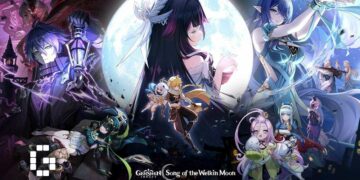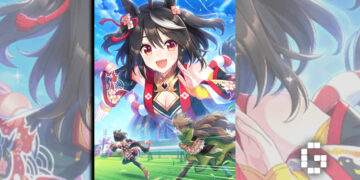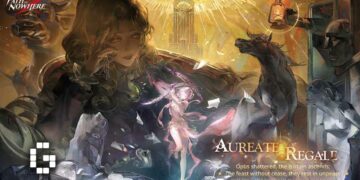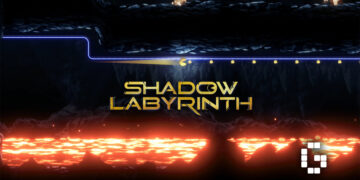This article on ‘Weekly Airing Anime Vs Binge Watching Anime: What’s The Better Way To Watch?’ was available earlier through the Gamerbraves Newsletter. Sign up for free to gain access to more articles about news and trends in the gaming industry and community.
Original Article
Who doesn’t love watching anime? Doing so has become far easier in recent years with so many streaming platforms making anime far more widely (and legally) available.
With anime being distributed outside Japan online via streaming platforms, a lot of these programs have begun adopting the binge-release style that many western dramas have. This means that the entire season is now released all at once.
This however has led to an all-new talking point about how we consume the medium. What is the better way to watch anime: catching it weekly or binge-watching it all together? Let’s talk about the advantages of both styles:
The Advantage of Binge Watching

The biggest strength of the binge model is that you can essentially watch the series whenever you want. Whether you’d prefer quickly going through it all at once or watching one episode per day, you’re free to do so. It’s a very practical system as everyone has a different (and likely busy) schedule that the anime can easily slot into.
Not to mention, once an anime is fully aired, everyone who hasn’t watched it will be doing so this way so it’s not like this is a truly new idea. If you’re more patient when watching anime, essentially all of it is binging in some form.
The Advantage of Weekly Anime

On the other hand, some people might like only having to watch one episode of an anime each week, allowing them to easily keep up with the show at a steady pace. That being said, I’d say there’s really one main reason why people prefer anime airing weekly. When you watch an anime at the time of its airing, you’re watching it when everyone else is doing so.
A big part of the anime community is the episode-by-episode discourse. Fans will quickly take to social media to discuss the highs, lows, controversies, and theories to come out of the latest episodes of their favorite anime, and being part of that conversation can be fun.
Seeing the latest image or clip of an anime to become a meme and being in on the joke is exciting and celebrating the latest battle with like-minded people can form a real connection with your fellow fans. While this is still possible with the binge format, it’s a lot harder for a show to maintain this communal hype when people can watch the whole thing in one go.
Case Study: Jojo’s Bizzare Adventure

The best example of this is Jojo’s Bizarre Adventure. Jojo Parts 1-5 aired weekly with the fanbase praising the show and flooding the internet with fan art and GIFs on “Jojo Fridays” for months, if not years on end. Not only did it help fans bond but the constant sharing of images and clips brought in more people. The meme of the character Abbachio joining his fellow gang members in kicking a guy is still used today, in part because the fanbase had a whole week to let it sink in and spread it around before the next big thing came about.
The fanbase essentially did free advertising for the show which is now one of the most popular anime in international markets (something Jojo struggled with for years).
Now Jojo Part 6: Stone Ocean has premiered on Netflix in 12 episode seasons all at once, allowing viewers to binge it. While the quality of the anime is still great, a lot fewer people are talking about it. You just don’t see the same buzz around the series that it had during weekly airings and that’s likely because everyone’s watching the series at different times. Some of my friends I used to talk to about Jojo after every episode haven’t even seen Part 6 since the urgency just isn’t there anymore.
This also affects how people view the series. I’ve noticed with Part 6, people tend to speak a lot about the beginning and ending but not a lot about what happens in the middle. This is likely because when watching a series at once from front to back, the middle batch of episodes tends not to stand out like they do when you see them week by week, and when that middle includes episodes like Bohemian Rhapsody, that’s a real shame.
It’s also pretty detrimental for shows that focus on build-up like mystery shows. Wonder Egg Priority or Neon Genesis Evangelion wouldn’t have the same impact if people didn’t have time to think about the mystery they raised while waiting for next week’s episode.
Weekly Vs Binge
Now, do I think it’s impossible for binge-only shows to become incredibly popular, of course not? Anime like Devilman Crybaby and Cyberpunk Edgerunners were huge when they premiered and they had the binge model.

An anime Youtuber named Glass Reflection even found that the vast majority of people only watch a lot of Netflix binge anime (or at least Google them) when they became available on the platform even if they had been available via weekly broadcasts in Japan for months prior. The reason for this is that a lot of people tend to just watch anime when it’s available at their own pace.
It seems that for more casual viewers, the convenience of the binge model is far more attractive. Being able to watch a show at any time is just plain practical for most individual’s daily life. That being said, for those that are more interested in anime in terms of discussion and community, weekly episodes are important. The discourse maintains the anime’s popularity for longer and can help bring in more fans.
Overall both styles have their advantages and which you like more will likely be determined by how you consume anime. The best thing about current anime is that most of the time you can have it either way. Most anime are still airing weekly, even Netflix is airing a lot of anime week by week simultaneously with Japan. If you want to watch an anime weekly as it airs, you can, if you want to binge it, you can always wait until it’s finished. It works either way so just watch as you please.









![[GUIDE] Alterna Vvelt: Blue Exorcist Another Story Tier List](https://cdn.gamerbraves.com/2025/07/Alterna-Vvelt-Blue-Exorcist-Another-Story-Tier-List_Guide_FI-360x180.jpg)

![[EXCLUSIVE] Creative Masterminds from Gearbox Software Reveal What Makes Borderlands 4 Worth the Wait](https://cdn.gamerbraves.com/2025/07/Borderlands-4-at-Bilibili-World-2025_Interview_FI-360x180.jpg)




![[ASIA EXCLUSIVE] Bringing Back a Classic: Inside the Making of FINAL FANTASY TACTICS – The Ivalice Chronicles](https://cdn.gamerbraves.com/2025/06/FFT-Ivalice-Chronicles_Interview_FI2-360x180.jpg)













